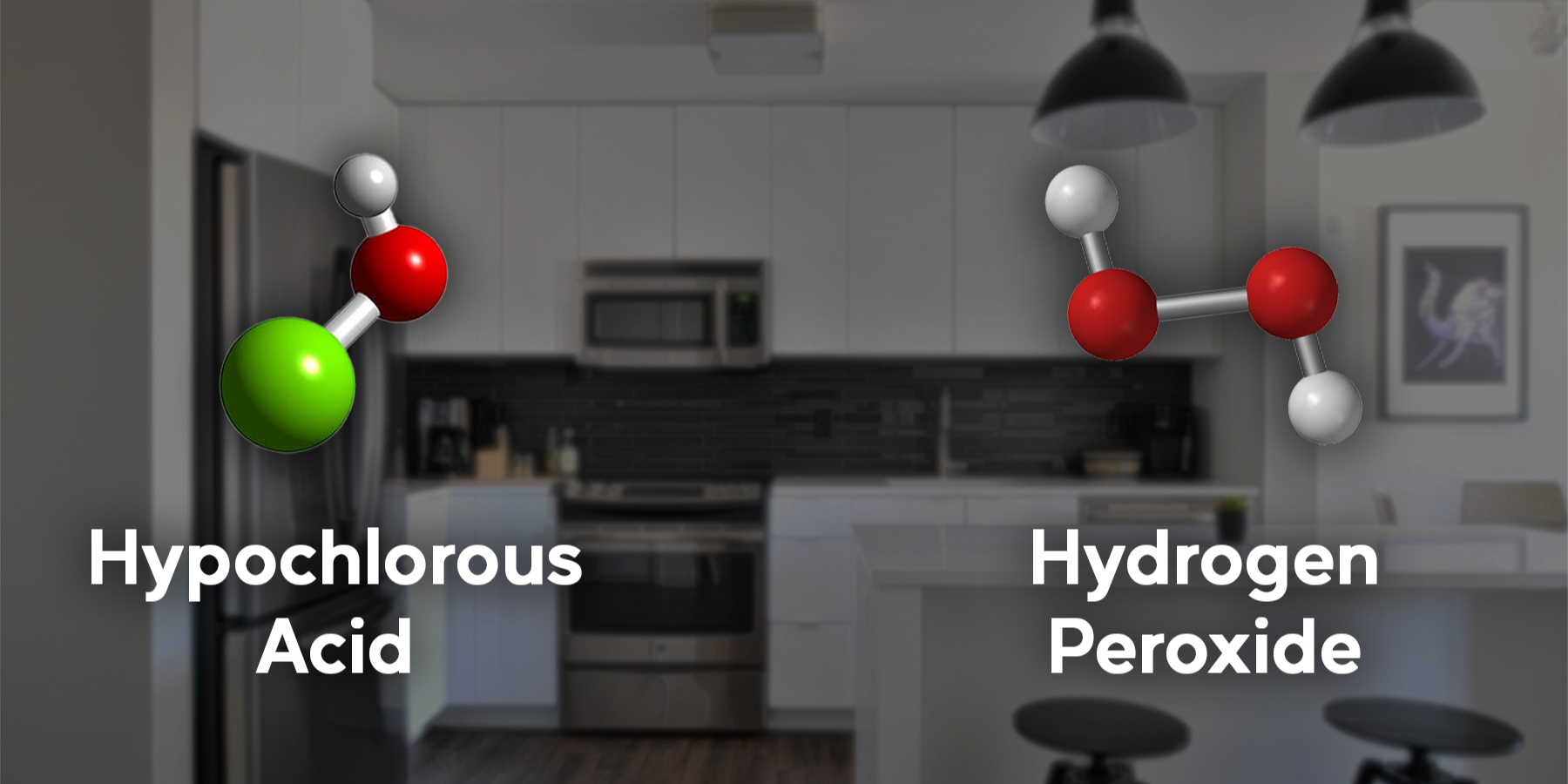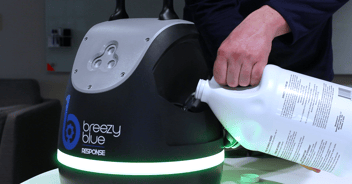
Unveiling the Chemistry: Hypochlorous Acid vs. Hydrogen Peroxide
In the realm of disinfection, hypochlorous acid (HOCl) and hydrogen peroxide (H2O2) stand out as two of the most effective, safe, and sustainable disinfectants available. Both are utilized in various settings, from healthcare facilities to household cleaning routines. However, delving deeper into their properties reveals distinct differences that impact people, their spaces, and the environment.
The Chemistry Behind Hypochlorous Acid & Hydrogen Peroxide
Hypochlorous Acid (HOCl) Based Disinfectants
HOCl is a unique chemical known for its antimicrobial properties. It is naturally produced by mammals’ white blood cells to combat infections, and it can be created by combining non-iodinated salt, water, and electrolysis. HOCl is an effective disinfectant against a broad spectrum of microorganisms, including bacteria, viruses, and fungi. This chemical disinfects by breaking down the cells of pathogenic organisms, penetrating cell walls and disrupting essential cellular processes, leading to microbial inactivation. Despite its potency, HOCl is gentle on surfaces and non-toxic to humans and animals at appropriate concentrations, and it degrades into small amounts of salt, water, and oxygen.
Hydrogen Peroxide (H2O2) Based Disinfectants
Hydrogen peroxide, often recognized as a common household disinfectant, is a simple compound composed of two hydrogen atoms and two oxygen atoms. Similarly to HOCl, H2O2 breaks down cell walls and DNA structures via oxidation. This disinfectant is effective against many different pathogens. The byproducts resulting from this process are just oxygen and water, leaving almost no residue behind. H2O2-based solutions are available in different concentrations (0.5% to 25%, combined with water) and are safe for people and the environment when proper protocols are followed.
Distinguishing Factors
Compatibility with Surfaces & Objects
H2O2 is less corrosive than HOCl. In scenarios where surfaces may be sensitive to corrosion, such as metals or electronics, using H2O2 solutions will avoid damage. Other materials may also be sensitive to HOCl but tolerant to H2O2, such as certain fabrics or plastics.
Residue and Odor
H2O2 breaks down to water and oxygen as its degradation products, resulting in minimal residue and odor. In contrast, HOCl will leave a significant salt residue and as well as sometimes leaving behind a slight chlorine odor and chlorinated byproducts if not properly rinsed. For applications where odor or residue is a concern, H2O2 is a better choice for disinfectant. H2O2 can be dispersed as a dry fog, whereas HOCl needs to wet objects in order to eliminate pathogens.
Environmental Considerations
While both compounds are relatively eco-friendly compared to other traditional disinfectants, H2O2 breaks down into just water and oxygen, leaving behind no harmful residues. This rapid degradation may make H2O2 a preferable choice in environmentally sensitive areas or for wastewater treatment.
Handling & Storage
The potency of H2O2 is reduced when exposed to light, so it must be stored in opaque bottles, unlike HOCl. However, H2O2 solutions have a longer shelf life (1 or more years) compared to HOCl solutions (6 or fewer months). This stability and longer shelf life contribute to easier handling and storage, making H2O2 more convenient for certain applications.
Applications
HOCl and H2O2 are effective for disinfection in various sectors, including healthcare, education, food processing, and residential cleaning. One common method is fogging these solutions, allowing for full coverage of an area. Breezy Blue™, the smart fogger, is recommended to be used with H2O2-based disinfectants for several reasons. First, it is safe around electronics, plants, fabrics, and other common items. Second, it leaves no odor or residue, and helps to remove organic odors caused by bacteria. Last, a 5000 cubic foot space (average classroom size) needs less than a minute of fog time with 5% H2O2 to fully disinfect. Fogging HOCl requires a much higher dosage which would wet everything in the space. Breezy Blue™ is designed to fill a space with small particles of H2O2 more quickly and more thoroughly than other foggers.
In conclusion, while both HOCl and H2O2 are effective disinfectants, they differ in compatibility with surfaces, environmental effects, and storage. When it comes to disinfectant fogging, aerosolized hydrogen peroxide (aHP) is quicker, easier, and more effective than hypochlorous acid.
Learn more:
What Is Hydrogen Peroxide Fogging and How Effective Is It?
What are the Differences & Similarities Between H2O2 & HOCl for Disinfecting a Cleanroom Surface?
Subscribe to Our Newsletter for More




